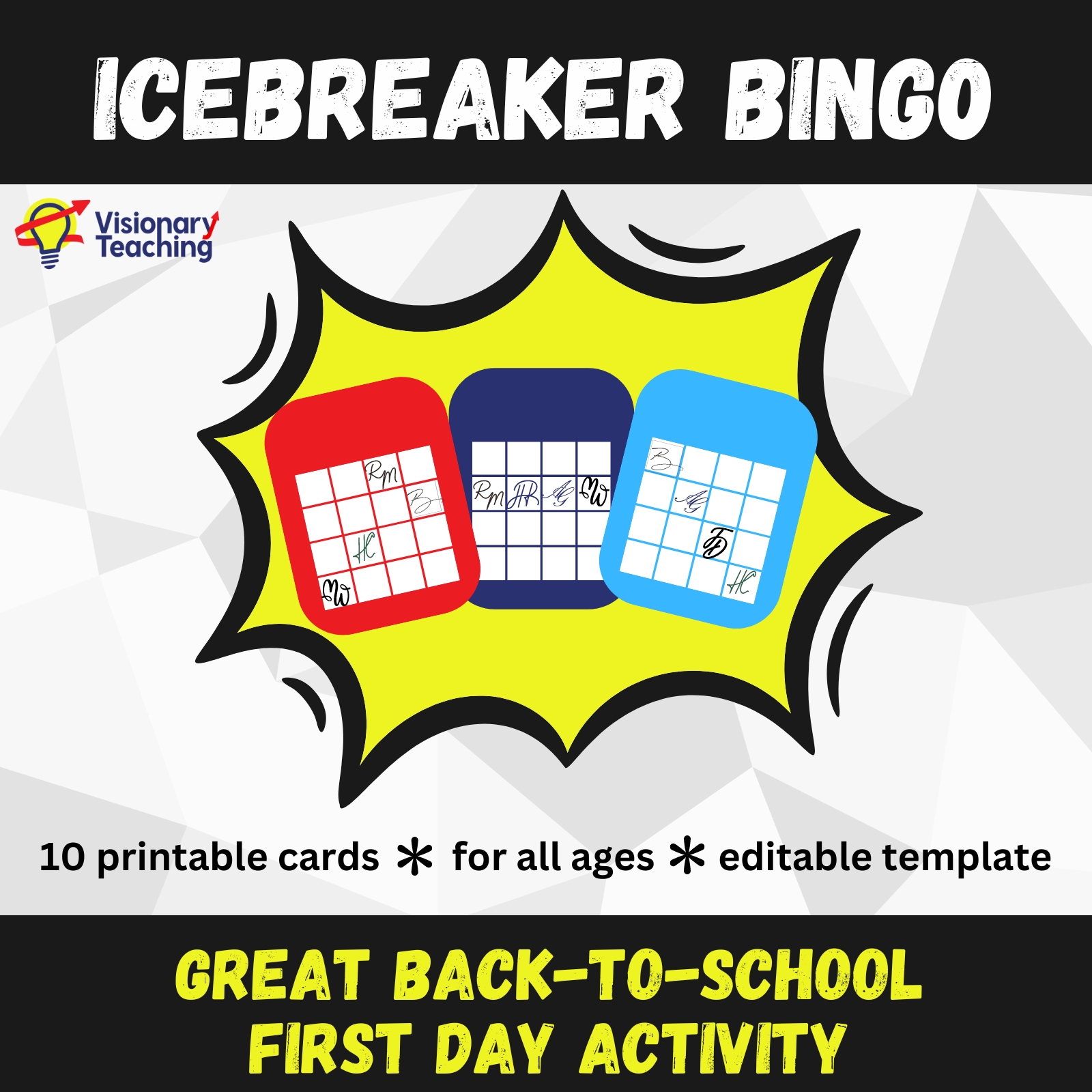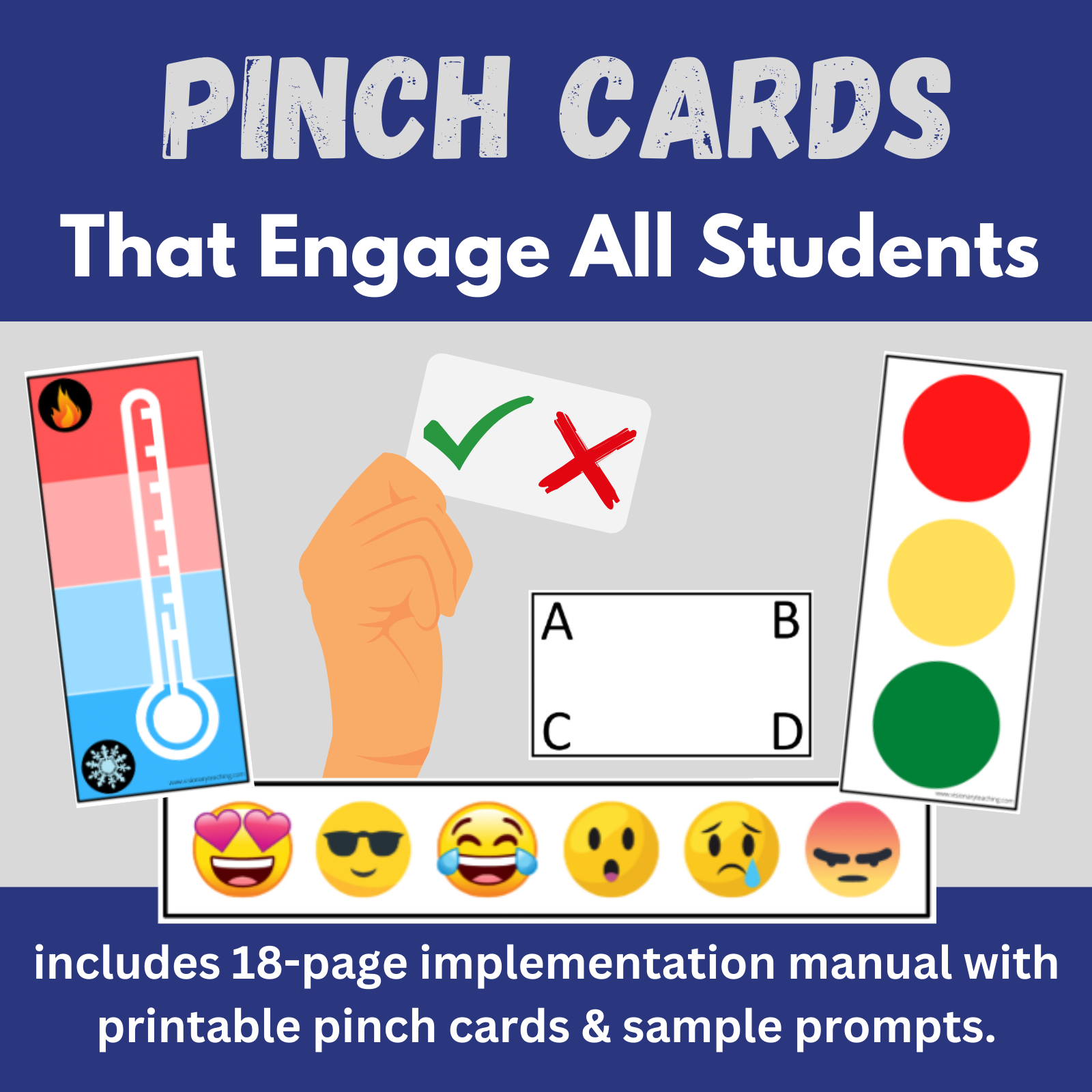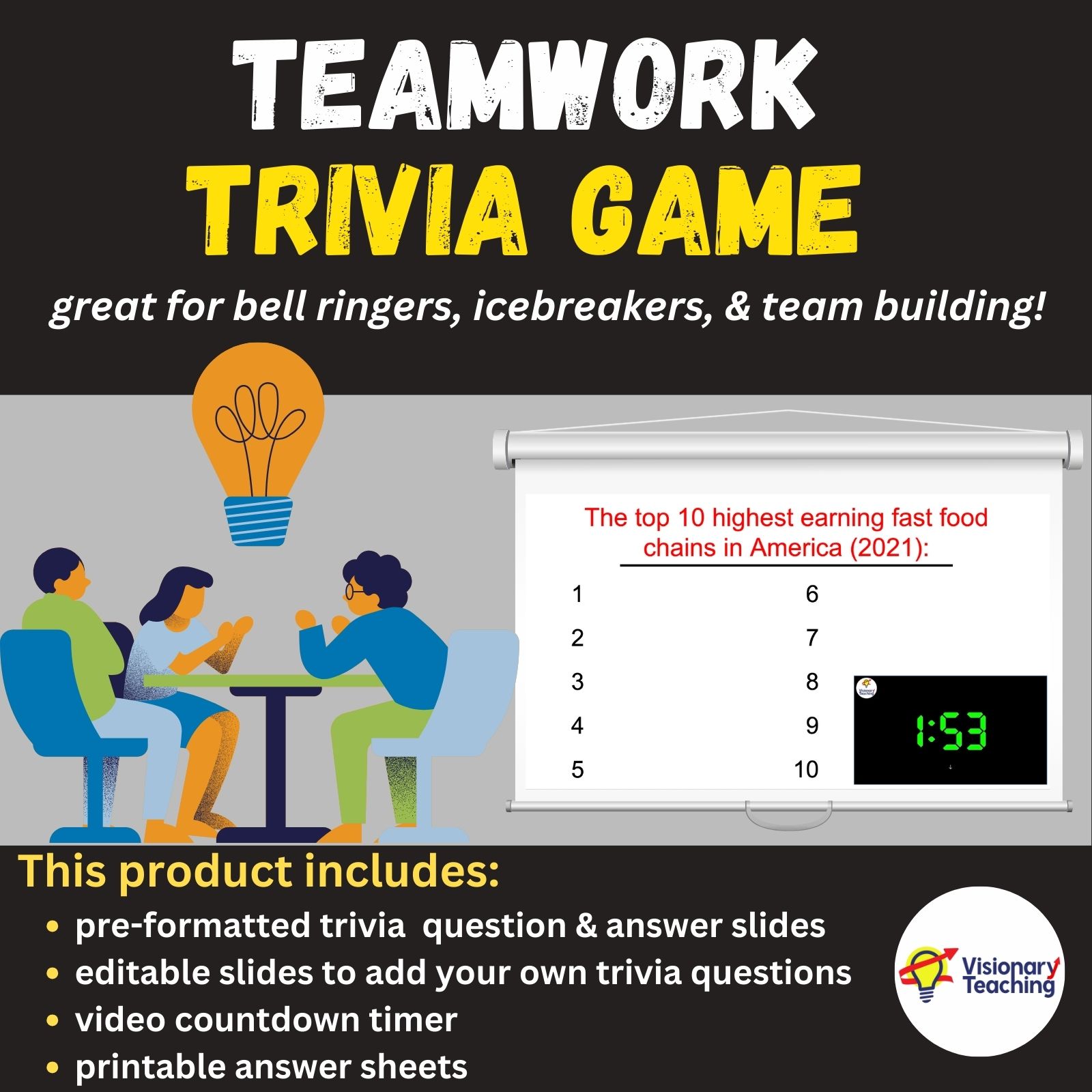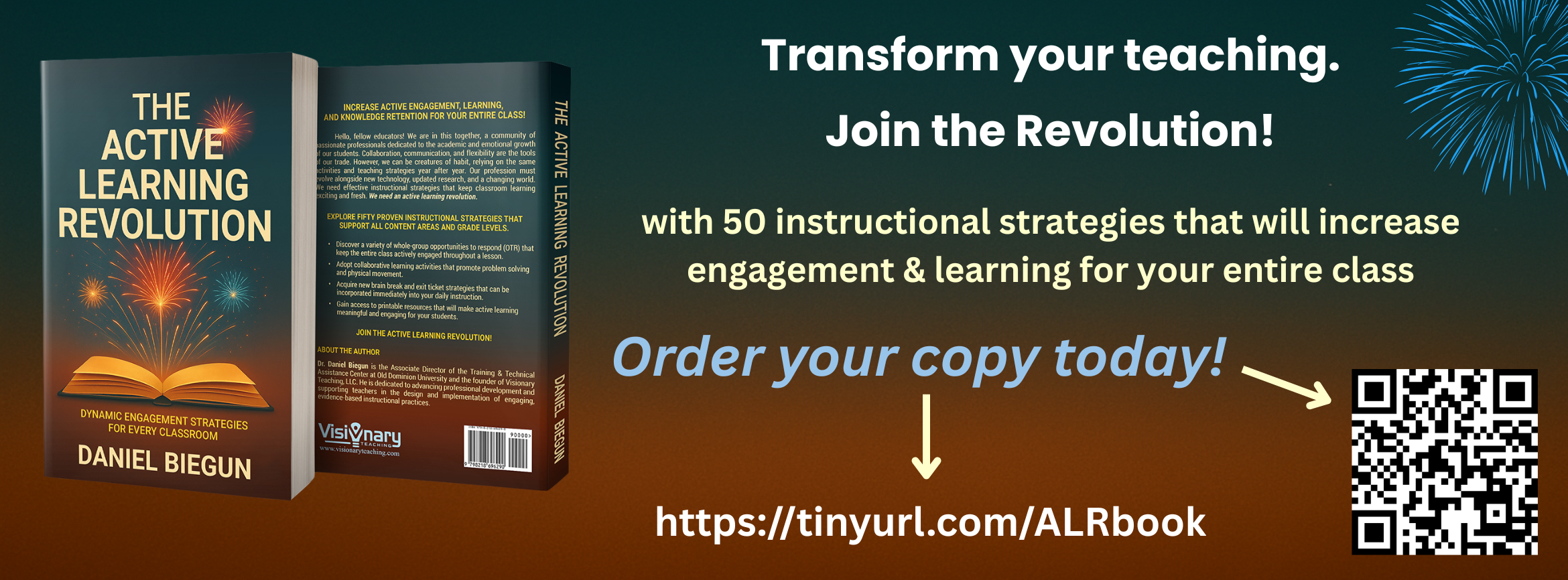
Here it is- the third and final section of potential New Year’s resolutions. If you have not already done so, go back and check out Part 1 and Part 2 of this series.
As with any professional development, do not try to do everything that is presented to you. Check through the 21 ideas presented across all 3 parts, praise yourself for all of the amazing things that you are doing as a teacher, and then set one goal for yourself in the coming year. Happy teaching!
15) Increase your students’ opportunities to respond.
Whole class responses offer all students opportunities to interact with content and apply what they have learned. Our tendency is to ask questions and then allow a single student to answer. When we do this, we miss out on great opportunities for the entire class to be actively engaged.
Research varies on how many opportunities to respond (OTR) each student should have per minute. My recommendation is that you simply try to gradually increase the number of OTRs that you provide over time. Here are a few options that allow entire classes of students to respond during virtual, face-to-face, or hybrid instruction:
- Pinch Cards- You can create a variety of pinch cards that allow students to answer multiple choice, true/false, agree/disagree, or other prompts.
- Gestures- Students will enjoy responding with simple body movements such as thumbs up/thumbs down, facial expressions, holding up fingers, or dance moves.
- Written Responses- Students can use paper or individual dry erase boards to give short written responses that include drawings, doodles, words, phrases, or sentences.

There are also a number of OTRs specific to virtual learning that can easily be used on Zoom or other platforms.
Will you make a resolution to increase the number of OTRs that your students get during lessons?
The benefits are enormous. Students get a greater number of repetitions while learning, interacting with, and applying the information that you teach. Don’t forget to use whole group OTRs with your adult audiences when you lead professional development sessions.
16) Make your classroom/school a model of inclusion for students with disabilities.
The idea of inclusion has gradually gained momentum in our public schools. We see far fewer instances of students with disabilities being segregated from their peers. But, there remains much work to do.
Why is inclusion important? It benefits everybody. Inclusive schools report fewer absences, fewer behavior problems, and lower dropout rates. Schools where inclusion is the norm prepare their students to live and work in diverse communities.
Inclusion requires a mind shift and culture change. Here are a few things that you can do to foster a culture of inclusiveness in your classroom or school.
- Adopt an “our kids” mentality. Refrain from referring to kids who don’t have disabilities as “my kids” and students with disabilities as “their (special education teachers) kids.”
- Use person first language. A disability does not define a person.
- Encourage regular interactions between students of differing abilities. This should include both academic and social contexts.
- Do not allow students or colleagues to use offensive language including cripple, handicap, or the “R” word.
- Have high expectations for all students. Set the tone that all students can learn in your classroom or school.
- Build a library of books and resources that positively represent all of your students (as discussed in Part 1 of this series.)
- Use Universal Design for Learning to plan and deliver your lessons so that all students have opportunities to access content and learn.
Will you make a resolution to ensure that your classroom is a model of inclusion?
This is a simple, grassroots concept. Use your influence as a role model to demonstrate respect for diversity and appreciation for inclusivity.
17) Ask your students more teaching questions and fewer testing questions.
Asking questions is an important part of teaching for a number of reasons. But how effective are the questions that we tend to ask our students? There are 2 types of questions: teaching questions and testing questions.

Testing Questions do what the name implies- they assess what a student knows or has learned. Some folks might call them thin questions or “wh” questions. Such queries are closed and typically have a single correct answer. They have little value to the teaching process. Who is the main character in the story? What is the square root of 144? Where did the British surrender to end the Revolutionary War?
Teaching Questions not only reveal what a student has learned, but also help develop important critical thinking skills. Such questions are open-ended and often afford opportunities for making connections and forming opinions. Who is your favorite character in the story and why? How might our modern lives be different if the British had won the Revolutionary War?
Will you make a resolution to increase your use of teaching questions and decrease your use of testing questions?
Asking more testing questions doesn’t require money or materials, only a mind shift. It is recommended that 80% of the questions you ask students should be teaching questions.
18) Stop assigning homework to your students.
Seriously, stop giving nightly homework. This is an outdated practice that can cause more harm than good.
Just because our teachers gave us homework does not mean that it is good practice. There is no research basis for homework offering significant benefit to students. There are, however, a number of negative side effects:
- Students who spend a lot of time on homework may experience stress and physical health problems.
- Homework difficulties can cause significant stress between family members.
- Your 1 hour of homework each night may actually be 3 or 4 hours for students who have disabilities or who do not have a parent available to help.
- Kids may have to choose between outdoor free play or extra-curricular activities if you assign too much homework.
Will you make a resolution to stop giving nightly homework?
Give some thought to why you are assigning homework. Can you offer sufficient opportunities for students to interact with content during the school day?
19) Participate in meaningful professional development.
Let’s face it, professional development (pd) can be hit or miss. Some pd is engaging and informative, but oftentimes we leave feeling like we wasted our time and attention. The key is to pursue pd sessions that are meaningful to you. There are a number of great ways to continue to hone your craft.
Check with your principal about any upcoming professional learning communities or book studies being offered by your school or district.
Look online for webinars related to a topic of interest. For example, Common Sense Education offers live webinars and free access to recorded webinars about distance learning.
Listen to a podcast that is designed for teachers. A few of my favorites:

Visit YouTube and find an inspiring Ted Talk related to teaching. Every Kid Needs a Champion by Rita Pierson is a personal favorite of mine!
Attend a virtual conference. We lead busy lives that often make it difficult to travel to international conferences. Take advantage of virtual offerings. Find a conference that is of interest to you and register. I am excited to attend the Council for Exceptional Conference in March!
Will you make a resolution to improve your teaching practices by participating in meaningful professional development?
There has never been a more convenient time to take advantage of professional development opportunities. Workshops and conferences have largely gone virtual, making them accessible from the comfort of your home.
20) Incorporate a personal hobby into your teaching.
Do you have a hobby or talent that you can use to make a lesson more meaningful and engaging to your students? Doing so allows you to play to your own strengths while sharing a practical application of the content you are teaching. Applying your interests also allows your students to see you in a different light.
Since there are limitless possibilities, it would be impossible for me to make an exhaustive list. Here are a few suggestions to get you started:
- Are you a musician? Write and perform songs that can help students retain content.
- Do you enjoy taking photos? Incorporate some of your pictures into lessons.
- Are you a talented artist? Lead students through craft activities related to a lesson.
- Do you love to travel? Share photos and artifacts that you have collected with your class.
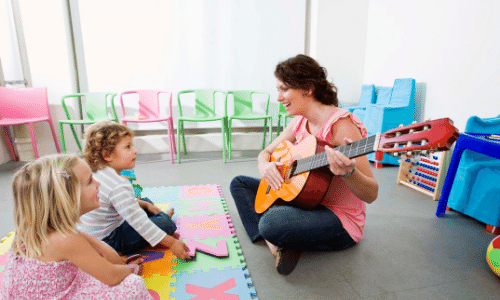
Will you make a resolution to share your hobbies and interests while teaching?
Don’t be shy. Teach your students that hobbies are important and can be applied to academic content. If you are having fun, they are more likely to enjoy themselves, too.
21) Take care of yourself.
Let’s finish with perhaps the most obvious potential New Year’s resolution for teachers. Unfortunately, it may be the most difficult to stick with- Take care of yourself.
If you are happy and healthy, it stands to reason that you will be a more effective teacher. Therefore, investing in yourself is actually a means of helping countless children over the course of your career. Just pick one or two simple improvements that you can make for your own benefit.
- Get plenty of sleep. Set a reasonable bedtime for yourself. (Use your DVR for those late night tv shows that you like.)
- Revisit a favorite hobby that has taken a back seat. What brings you joy and peace? Scrapbooking? Golf? Painting? Hiking? Get back at it!
- Leave school (or log off of your computer) at a reasonable hour.
- Exercise! Schedule times to go for a walk, ride a bike, play pick-up basketball, or visit the gym a few times per week.
- Drink water throughout the day.
- Have conversations with co-workers that do not involve teaching or your school.
- Do not check e-mail during the weekends.
Will you make a resolution to invest in yourself by approaching 1 or 2 simple lifestyle changes?
You know yourself and your needs. Taking care of yourself is not selfish. You deserve to be happy, healthy, and fully recharged.
I wish you an amazing and successful 2021!!


